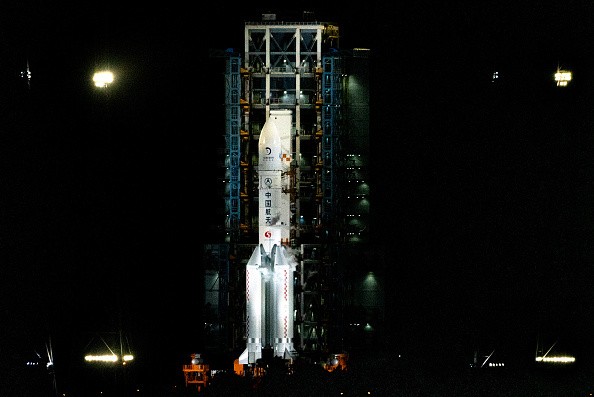
China is planning to launch a new solid-fuel rocket that can transport 20 satellites in its cargo. It has recently been greenlit and is expected to make its maiden flight in 2022.
The Smart Dragon-3 Takes Flight in 2022
The Jielong-3 or Smart Dragon-3 is a small-lift rocket that will operate at a competitive cost per mass of $10,000 a kilogram. Jiang Jie, a rocket scientist with the rocket's developer, the China Aerospace Science and Technology Corporation (CASC), told Xinhua on Wednesday by Yahoo news.
As the latest member of the China Academy of Launch Vehicle Technology (CALT)Smart Dragon commercial rocket family, the SD-3 gained its project approval on Dec.31, 2020. China will launch the new rocket through a seaborne platform in the first half of 2022.
According to CALT, the 2.64-meter-diameter SD-3 with a 3.35-meter-diameter nose cone is the largest and strongest in the Smart Dragon rocket series. It is capable of sending a payload of 1.5 tons to the 500-kilometer Sun-synchronous orbit (SSO).
Jiang, who is also a CALT expert and member of the 13thh National Committee of the Chinese People's Political Consultative Conference (CPPCC) and an academician of the Chinese Academy of Science, said that the Smart Dragon-3 aims to meet the market needs of launching a large-scale commercial satellite constellation, as it is capable of sending as many as 20 satellites in one flight, as reported by Global Times.
Also Read: China Moon Rover Finds 'Milestone' Rock on Far Side Believed to be From Meteor Impacts!
The rollout of the Smart Dragon-3 would reduce the unit cost of payloads to $10,000 per kilogram, said CALT, highlighting the model's strong market competitiveness. China's upcoming rocket has been fitted with facilities that support both land and sea-based launches.
Assembly and testing of the Smart Dragon-3 will be carried out in Haiyang Port in Haiyang, East China's Shandong Province, a site dubbed the "Dongfang Space Port" specifically for sea-based space launches. The company also hopes that executing a commercial launch service contract can be shortened to six months, significantly improving rocket launch efficiency.
Smart Dragon-3 Compared With SpaceX Falcon 9
In comparison, the SpaceX Falcon 9's heavy-lift rockets such as the SpaceX Falcon 9 have managed to reduce costs to $2,720 per kilogram for low-Earth orbit, but it is usually more expensive to sent the same payload into space on a smaller space vehicle. But, the space vehicle did launched a new batch of 60 Starlink internet satellites into orbit Thursday morning (March 4), and nailed its landing on a floating platform at sea to top off the long-awaited mission.
The SpaceX Falcon 9 is a reusable, two-stage rocket designed and manufactured by SpaceX for the reliable and safe transport of people and payloads into Earth's orbit and beyond. It is the world's first orbital class reusable rocket that allows SpaceX to relaunch the most expensive parts of the rocket.
China's Space Program
China has stepped up its space rocket programme in the last couple of years as the country has built a space station for launching rockets, its first mission to Mars that aims to land a space probe on the Red Planet in Mat this year, and plans to land Chinese astronauts in the Moon by 2030. Last year, is sent the final satellite of its BeiDou global navigation network into orbit.
Work is underway to upgrade and develop new launch vehicles such as the Long March rockets to fulfil its space ambitions. The rockets range from small-lift vehicles to heavy-lift ones used for the lunar and space station programmes. A super-heavy-lift rocket is also in the works expected to be ready around 2028 and will be used for China's first interplanetary mission.
Related Article: China's Rising Space Industry Challenges US in 21st Century's Space Race
This article is owned by Tech Times
Written by: Luis Smith
ⓒ 2025 TECHTIMES.com All rights reserved. Do not reproduce without permission.




